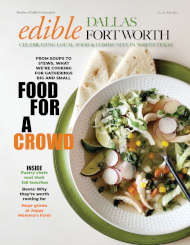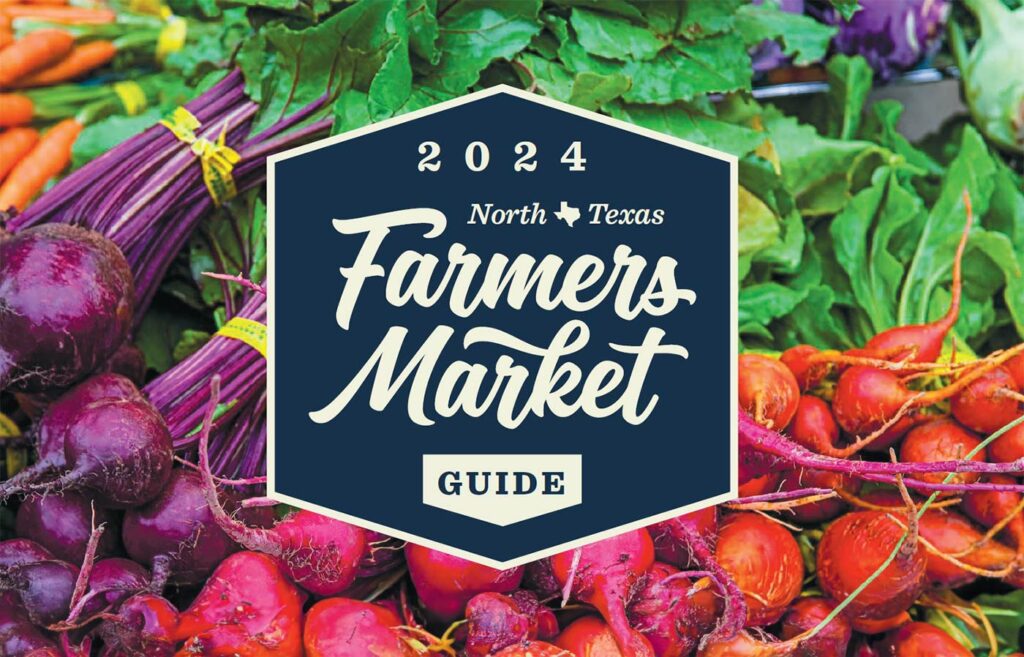Photography: Teresa Rafidi
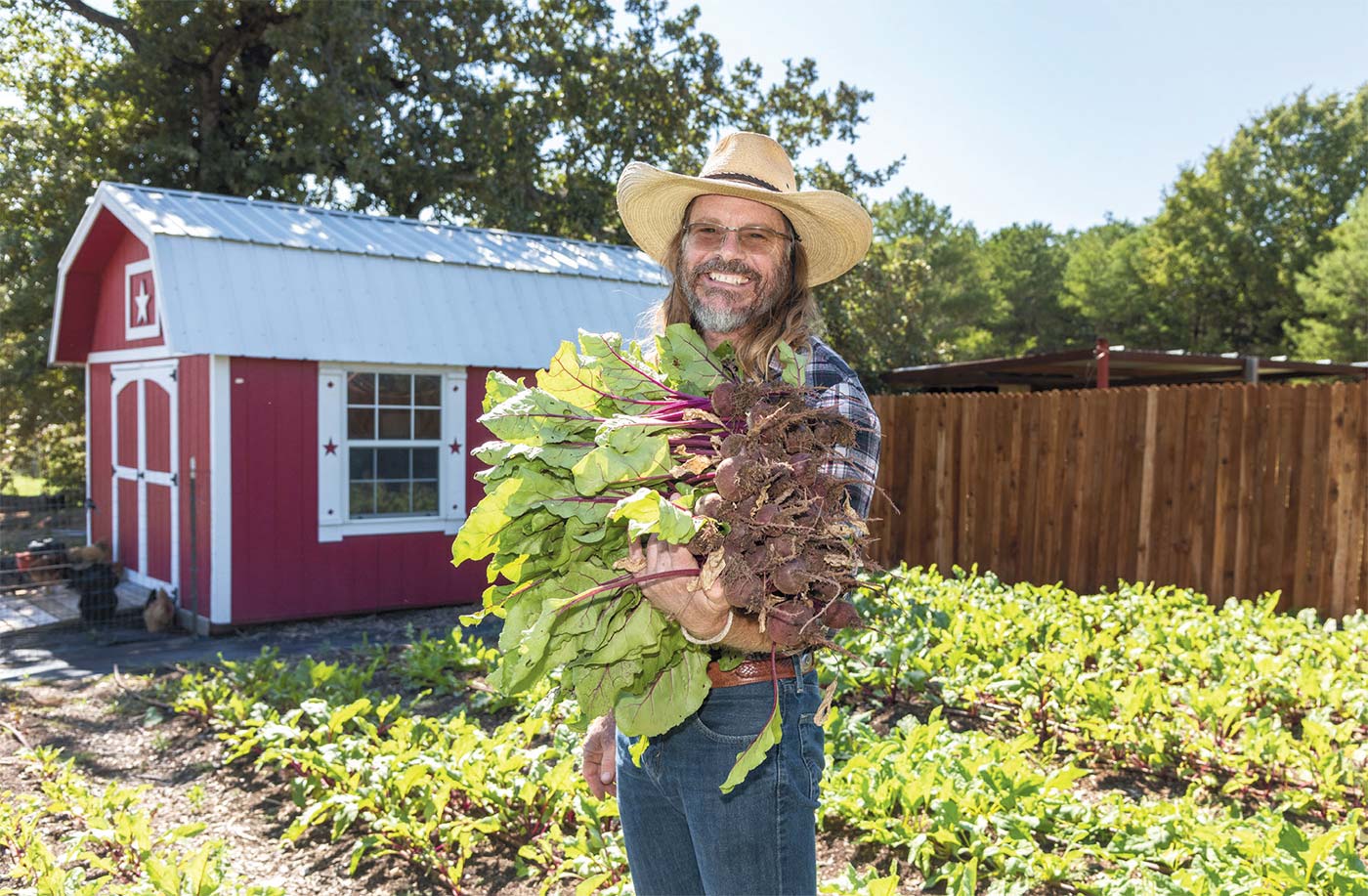
Charlie Blaylock answers the door in his signature wide-brim hat, gray-tinged brown hair pulled back in a ponytail. Moose, his mutt, barks briefly at the intruder before Charlie good-naturedly shushes him. (My ankles are safe.) Before long, we’re walking the beds of Shine’s Farmstand, which are in transition from summer to fall-winter on my visit.
In 2013, Charlie Blaylock “had a recognition,” as he calls it. That’s when he was diagnosed with skin cancer. Melanoma. “The worst you can get,” he says. “It was enough to make me realize that I had better get to farming if I was going to.”
So the following spring, with wife Laura’s blessing, Charlie left his job as a pharmaceutical research chemist—which he liked very much, thank you—and began transforming the unruly clot of land behind their home into a highly productive small farm. The Blaylocks live on the outskirts of Azle, where the soil ranges from just plain poor—“beach sand,” Charlie says—to dense clay. “I could make pottery out of that soil.” The farm’s name comes from a nickname his mother gave him: Sunshine. Says Laura, “He’s a terminal optimist.”
Today, Charlie sows his 8,400-square-foot garden/farm in rhythm with the seasons, planting and harvesting year-round, and following a biointensive approach developed by John Jeavons in California. “Biointensive means creating a soil food-web inside a garden area,” Charlie says. That’s the community of organisms that lives in the soil. “You can grow more plants in a smaller area because the soil is healthier.”
“Shine’s…has quickly become one of my most beloved farms,” Molly McCook told 360West earlier this year. The chef/owner of Ellerbee Fine Foods in Fort Worth praised the produce Charlie brings her, “from the beautiful assortment of lettuces and greens to his root vegetables.” Clay Pigeon is another Fort Worth restaurant customer. But most of his fruits and vegetables (and eggs, from a 50-chicken flock) go to Cowtown
Farmers Market, where the farmer can be found every Saturday year-round, usually with his faithful sidekick, Moose. Charlie grew up in a military family with deep Texas farming roots and learned about gardening young. “My brother had a garden outside his tent in Iraq—growing chiles.”
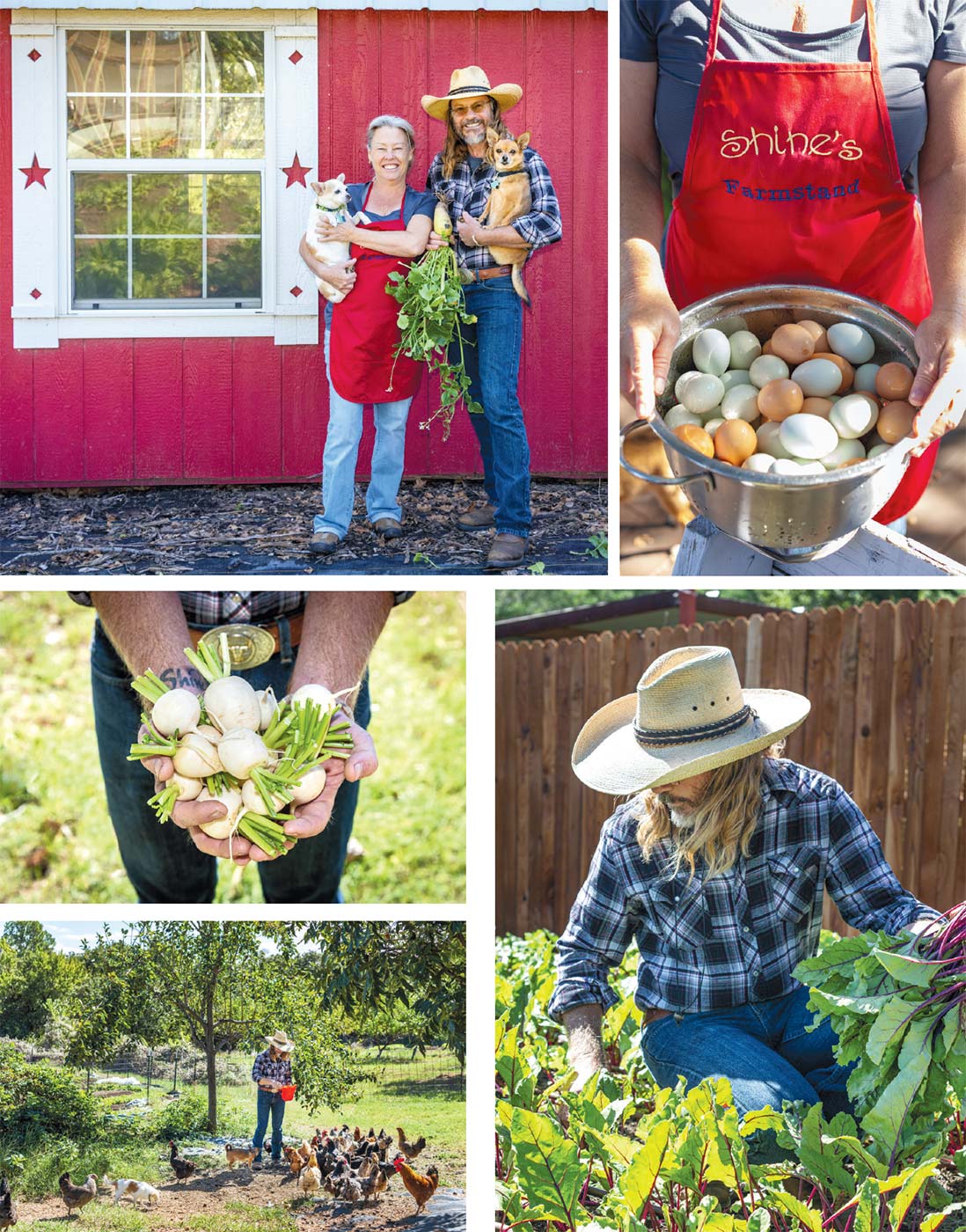
Charlie’s fall-winter crops maturing right now include Japanese turnips (which can be eaten raw), red and gold beets (which he transplants, to fortify them against soil and insect pressure), Easter egg and French radishes, bulb fennel, carrots (“because I double-dig beds, they’re extra long”) and his popular mix of salad greens. He doesn’t sell honey, but he does nurture pollinator colonies in top-bar Kenyan bee hives, designed primarily as honeybee shelters.
For the 10% of his harvest that stays on the home table, Charlie’s deeper driver is his love of Mexican food. “I’m a big Diana Kennedy fan,” he says, citing the doyenne of Mexican cuisine. “What I love about Mexican cooking is [that] it’s still closely tied to what comes out of the ground.” In this case, his ground.
He grows corn for his own masa—“I actually have a cast-iron grinder I got from Mexico”—with which he makes tortillas and tamales. He grows lots of beans and prefers kidney over black because they’re easier to shell. “I like big red tomatoes because they make good salsa,” he says, noting that this year’s harvest was put up long ago. In spring and summer, he grows bell peppers for the farmers market and hot peppers for home use: Anaheims, jalapeños, serranos. “We dry and freeze the chiles.” “We” means Laura is by his side in the kitchen, handling most of the freezing and canning as well as sharing her flair for baking. “I love to take the fruit he grows and turn it into cobblers and pies,” says Laura, who’s a hydrologist, a scientist who studies how water interacts with the Earth’s crust.
None of this industry is apparent on drive-up to the one-story brick house the Blaylocks have called home for twenty years. Faded Nepali prayer flags flutter above the porch. And then, slowly, you spot clues to what might be going on here. A profusion of hoja santa next to the porch, with a tree frog nestled on one of the broad, green leaves of the Mexican plant. Oregano and garlic chives in what were once flower beds. Around back, sturdy pepper plants—one is 4 years old—sagging with bright red pods, and banana trees, which Charlie grows for their leaves to wrap meats and make tamales.
He points to the knee-high purple-hull peas, which never see the light of a farmers market or restaurant table, peas he and Laura will shell and freeze. These will get a Nepali treatment, he says, learned from the mother of a friend, using cumin, tomato, ginger and garlic.
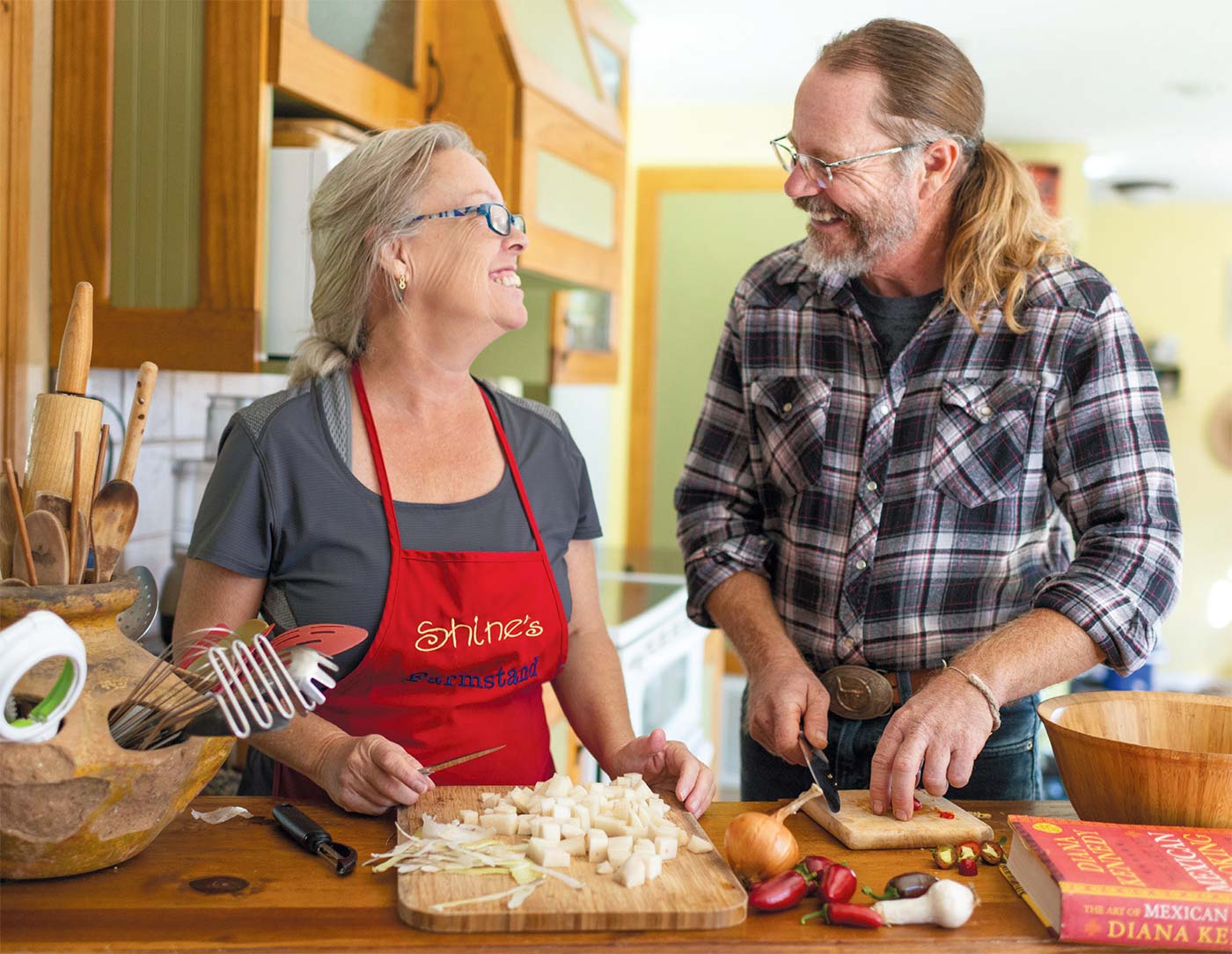
“This is my new extreme sport ….What I do gets me outside all day, gets me dirty, fulfilled and challenged.” —Charlie Blaylock
Charlie, who’s 48, likens the farming he does today to the extreme sports he enjoyed as a younger man (with better knees): Cycling races and surfing in Hawaii. Sky-diving. With Laura, long-distance hiking in places like the Grand Canyon and the outer mountain loop at Big Bend National Park. White-water rafting. Spelunking. “This is my new extreme sport,” he says. “What I do gets me outside all day, gets me dirty, fulfilled and challenged.” He has a single part-time helper, Texas Christian University student Ericka Fisher.
But Charlie does more than coax the most out of his recalcitrant land. He’s also doing his best to nurture and grow the local food movement in Fort Worth and the surrounding area through groups as diverse as the Tarrant County Food Policy Council, where he helps people navigate urban agriculture ordinances and changes in state policy, and Opal’s Farm, a budding community farm in a food desert, the United Riverside neighborhood, on land leased from the Tarrant Regional Water District.
“I’m the soil and plant guy,” he says. “I teach them about bed development, how to manage soil nutrition.” At Cowtown, he serves on the board and manages the market. “A lot of what I do is growing more farmers so we have a more active food movement,” he says.
All this is possible, he adds, because of Laura’s support. But it’s also rooted in Charlie’s beliefs. “I’ve always thought,” he says, “a life of abundance is best shared.”
- Facebook: Shine’s Farmstand
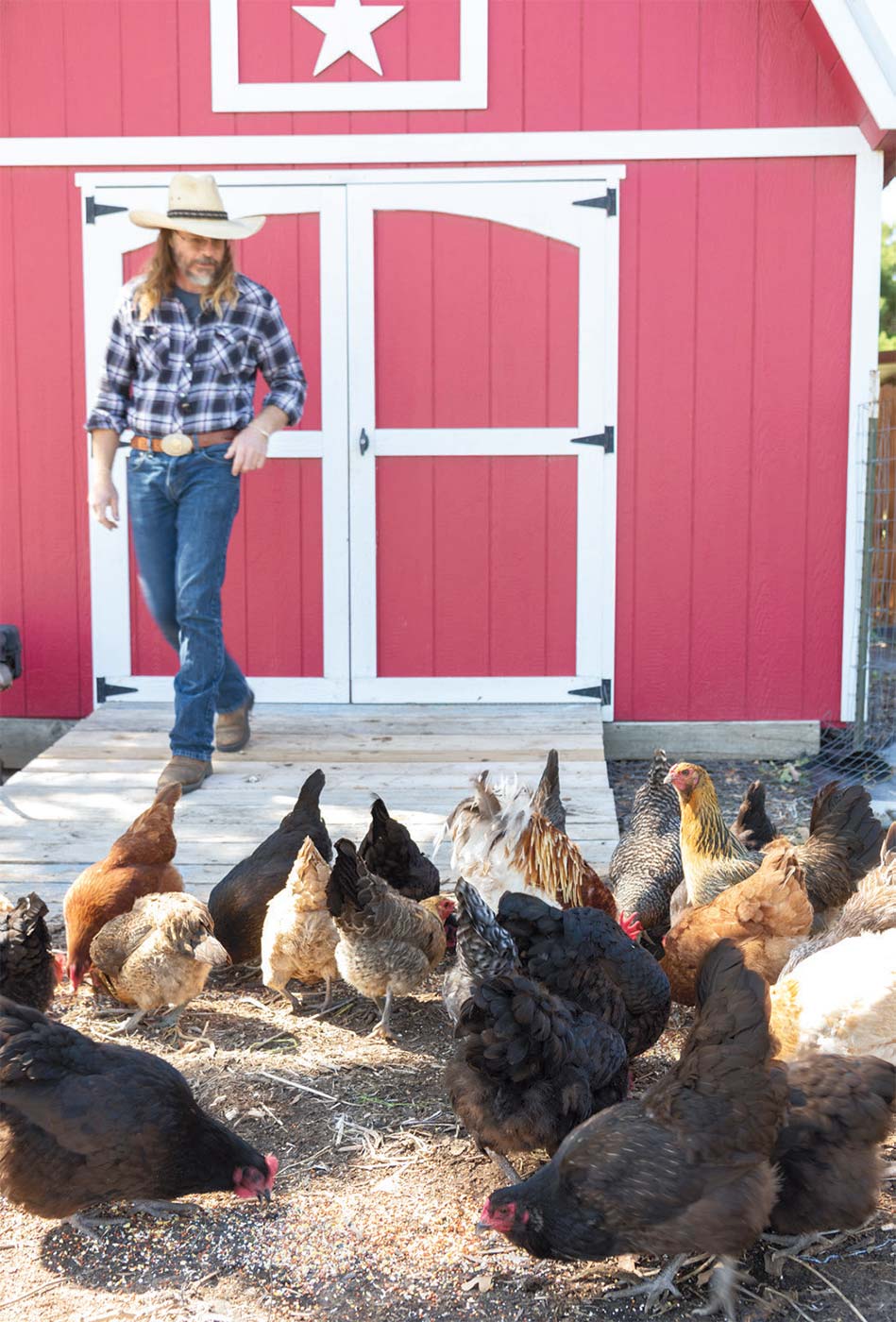
COWTOWN FARMERS MARKET: CHERISHED THROWBACK
Cowtown Farmers Market may not look like much—no fancy pavilion, no quaint historic village—but it may be the closest thing in North Texas to an old-fashioned, truck farmer market, where growers assemble to o er up their harvest.
“We were under the bridge [first],” says Ben Walker, the “B” in B&G Gardens from Poolville, referring to a spot near the Tandy Center in Fort Worth. The market was part of the North Central Texas Farmers Markets, created under the auspices of the Texas Department of Agriculture in the 1980s.
“It was producers only,” Walker says. “That was the concept when the market was first established.” The criteria were simple: Everything sold had to be grown by the farmer within a 150-mile radius.
“It was when Jim Hightower was ag commissioner,” says farmer Danny Russell, former mayor of Sunset. “I was on the steering committee … I worked with his office and staff and helped create the state board we still have.” Hightower served as Texas Agriculture Commissioner from 1983 to 1991.
Back then, it was just one of several North Central Texas farmers markets. Walker says a speaker at one of the board meetings told the group they needed to come up with an “easy-sounding name.” They’d been called “Cowtown” informally since their inception, so they drew up a logo and made it official. “That’s where we got the name Cowtown.”
Eventually the other North Central Texas markets dwindled, and the Tandy group went through several different locations, struggling to find a fit. “We meandered like the children of Israel,” Russell says.
Walker says they were driving around one day when they spotted the current location on the Benbrook traffic circle in front of Texas Outdoors. They asked the owner if they could pitch their market there, and Patsy Cantrell, speaking for the family, said yes. “I’ve always got a big heart for farmers and ranchers,” Walker recalled her saying. That was fifteen-plus years ago, and they’ve been setting up shop every Saturday since—with seasonal Wednesday markets in the summer when farmers have enough produce.
“We’ve got eight or nine just regular old vegetable truck-farming people,” Russell says. “The rest is specialty beef, cheese, water buffalo…and that’s good for the market. The people who own that property—the Cantrell family—are really good to the farmers.”
KIM PIERCE is a Dallas freelance writer and editor who’s covered farmers markets and the locavore scene for some 30 years, including continuing coverage at The Dallas Morning News. She came by this passion writing about food, health, nutrition and wine. She and her partner nurture a backyard garden (no chickens – yet) and support local producers and those who grow foods sustainably. Back in the day, she co-authored The Phytopia Cookbook and more recently helped a team of writers win a 2014 International Association of Culinary Professionals Cookbook Award for The Oxford Encyclopedia for Food and Drink in America.




